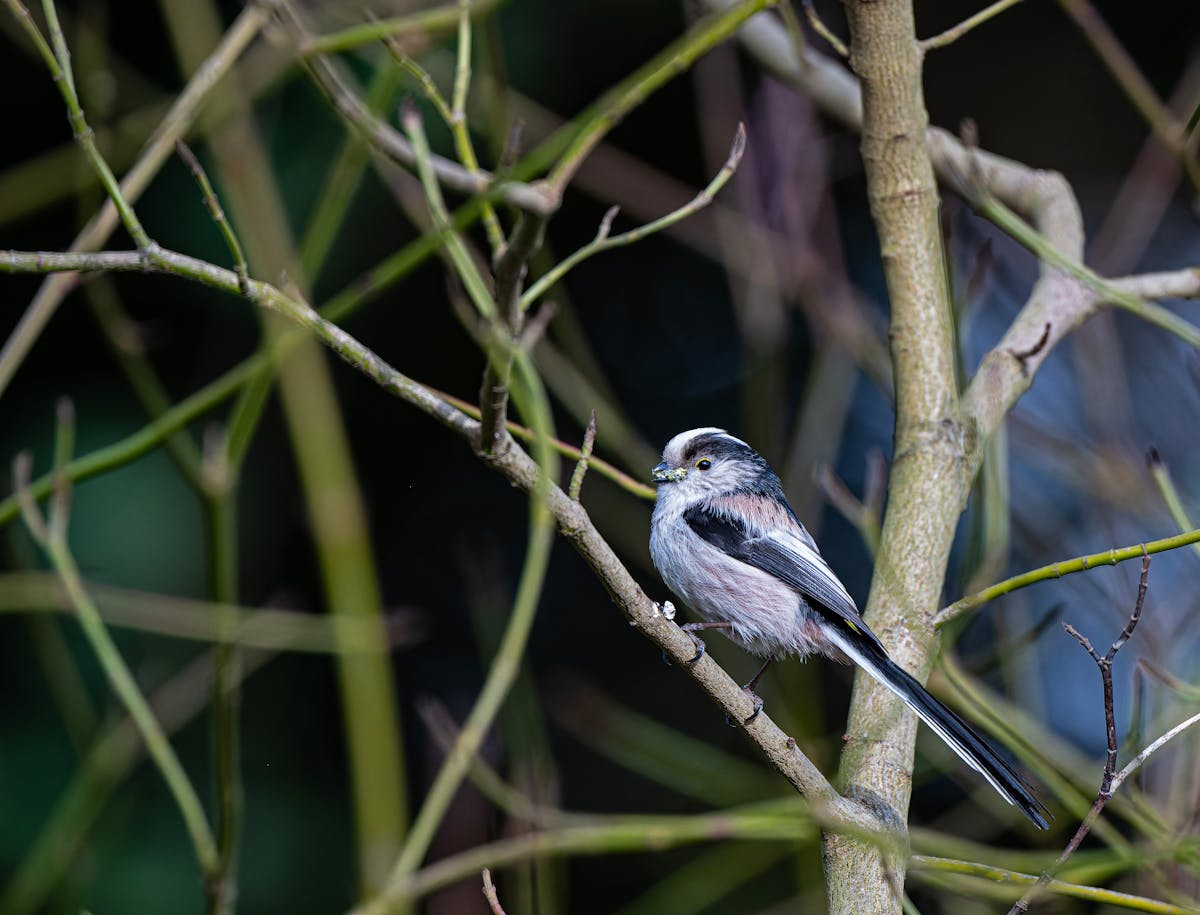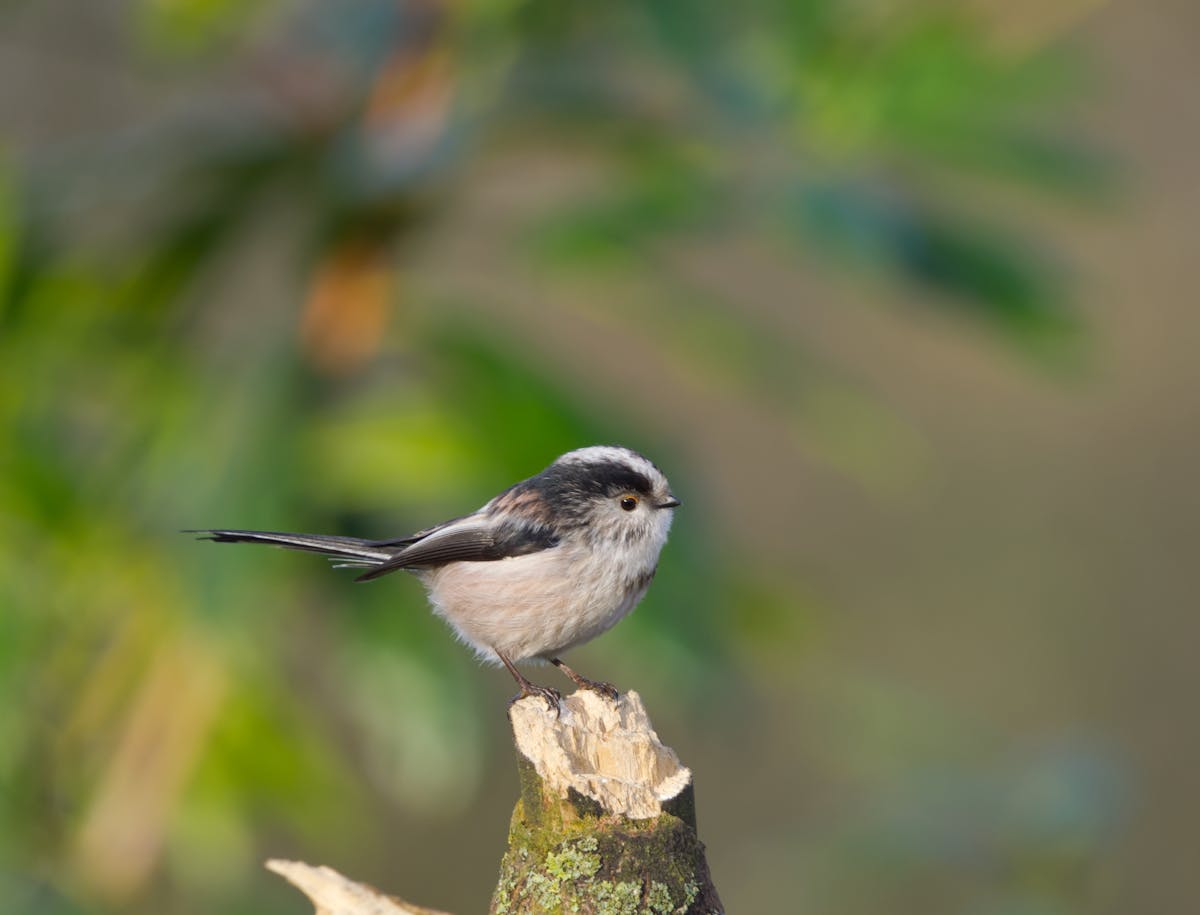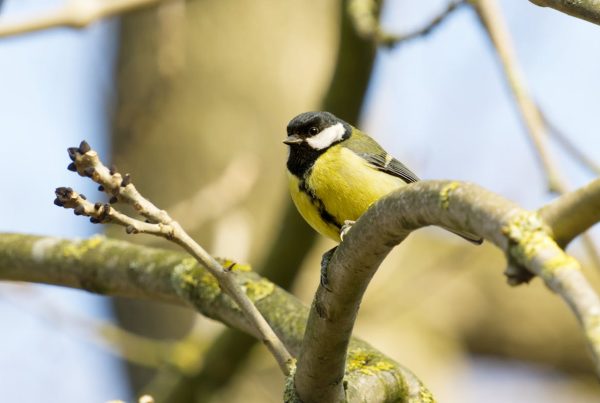- Order: Passeriformes
- Family: Aegithalidae
- Habitat: Open Woodland, Garden, Park
- Diet: Insects; sometimes seeds in the fall and winter.
- Nesting: Shrubby, usually found between the forked limbs of trees.
- Habits: Treecreeper, social, noisy, and flocking.
- Conservation and Management: Least Concern

Long tailed tit bird
Description:
Long-tailed Tits are small birds. They are pale pink, white, and black. Their tails are fluffier and longer than their bodies, making them easy to spot. You can often find them in woods, scrub, and parks. They search for insects and spiders among the low plants. They are social and often gather in flocks, and you can recognize them by their bouncing flight. They adapt well to towns and cities, and people can see them on bird tables and feeders.
Nesting:
The nest of the Long-tailed Tit is a rounded construction of moss in a bush or tree fork. It wraps the nest in cobwebs and lichen. It also fills the crib with up to 1,500 tiny feathers for warmth and comfort. There are 8–12 eggs in the nest.
Fun Fact:
Unlike other tits, these birds are cooperative breeders. Helpers, often relatives or previous unsuccessful breeders, assist in raising the young. This teamwork boosts their breeding success. Birds decorate Long-tailed Tit nests with feathers and lichens. They blend in well and keep warm against the island’s elements.
Identification:
- Size: 14 cm in length
- Wingspan: 16-19 cm
- Read More Coloring: Black, white, and pink feathers with a tail longer than its body
- Flight: Bouncy, excitable flight, usually in groups of about 20 birds
- Call:
- The Long-tailed Tit is a gregarious and noisy species, calling in groups even in winter.
Distribution:
Common, especially in Europe and parts of Asia.
Where to See Them:
Fairy Glen, Rosemarkie: A scenic glen with waterfalls that is home to a variety of birds.
Flatford Wildlife Garden, East Bergholt: A lovely place for gardening and enjoying wildlife.
Key Facts:
Diet: Insects during breeding, and seed (autumn, winter)
Weight: 7-10 g
Conservation status: Least concern and not listed as endangered/not evaluated.
Habitat: Breeds in approximately 340,000 territories in the UK.










